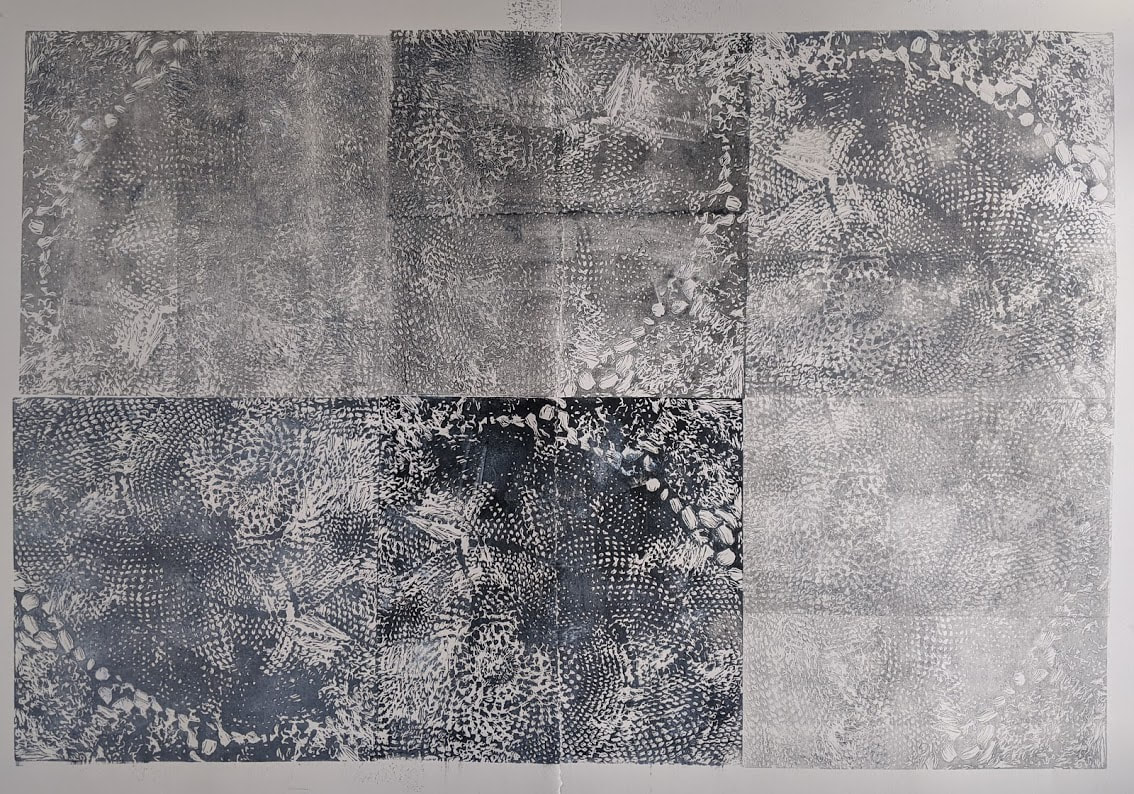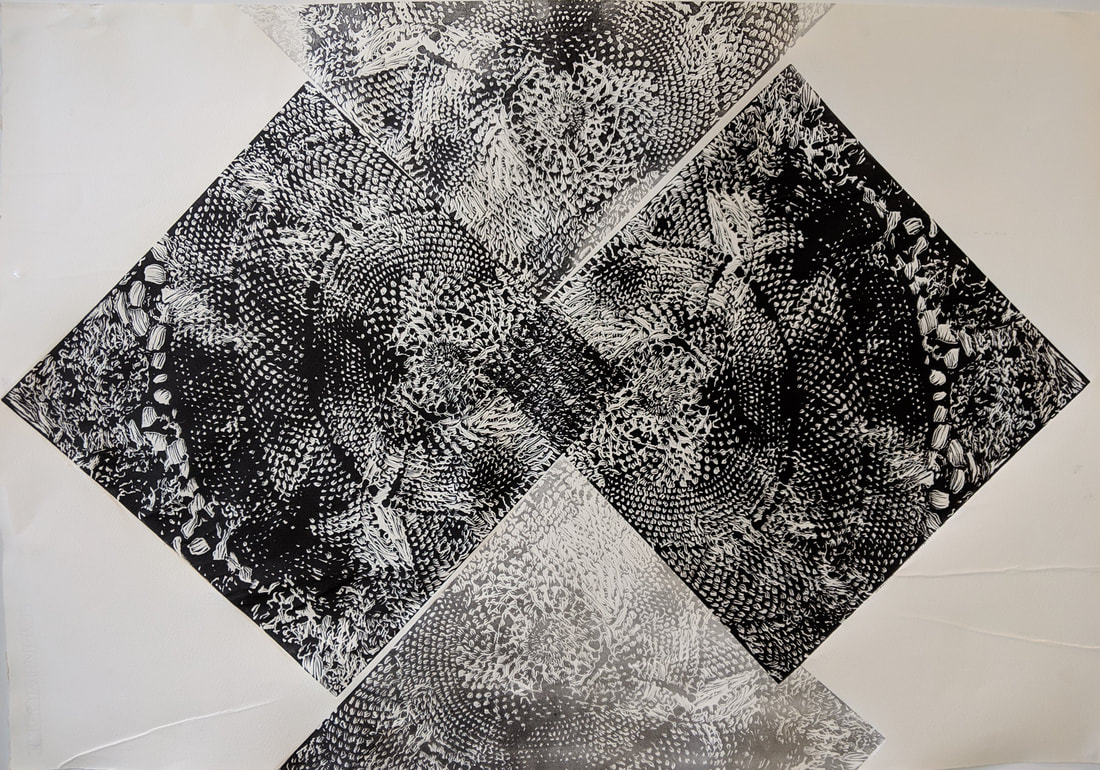A Lace Archive, 2020
Brunswick Street Gallery, Fitzroy
Lace under a microscope. This body of work came out of riffling through my great grandmothers collections of lace and textiles in the years after she passed. I made connections between the delicate webs of veins and wrinkles on her thin, aged skin and the mountains of folded intricate fabric. The lace almost mimicked part of the human body- veins, wrinkles, our sprawling, spider like nervous system. Isolating sections of the lace, I created a series of lino prints made by covering the lace in ink, and pressing it onto the lino block. This was to document the imperfections of the fabric, and also to give the illusion of a sense of weight. The process of carving was labour intensive, as is the actual time intensive process of lace making. Lace was traditionally made by women to adorn other women’s bodies, domestic and sacred spaces. My grandmothers table clothes and runners and doilies adorn my childhood memories of home. Lace was also used to decorate statues of Mary and the altar in the church I attended as a child and teenager. The prints also reflect on the notions of ritual and adornment between the domestic and religious spaces that I grew up in. Now ostracized from the religion and the earnest beliefs and the sense of loyalty that my family have to the church, I cannot escape the influence that it has had on me. The organic shapes mimic the corporeal and record the trace of the passed body. The prints are delicate, meandering and repetitive. They are both banal and contemplative. These prints are my own reminder of religious and domestic, and of my continued attempt to understand and unpack these spaces.
Brunswick Street Gallery, Fitzroy
Lace under a microscope. This body of work came out of riffling through my great grandmothers collections of lace and textiles in the years after she passed. I made connections between the delicate webs of veins and wrinkles on her thin, aged skin and the mountains of folded intricate fabric. The lace almost mimicked part of the human body- veins, wrinkles, our sprawling, spider like nervous system. Isolating sections of the lace, I created a series of lino prints made by covering the lace in ink, and pressing it onto the lino block. This was to document the imperfections of the fabric, and also to give the illusion of a sense of weight. The process of carving was labour intensive, as is the actual time intensive process of lace making. Lace was traditionally made by women to adorn other women’s bodies, domestic and sacred spaces. My grandmothers table clothes and runners and doilies adorn my childhood memories of home. Lace was also used to decorate statues of Mary and the altar in the church I attended as a child and teenager. The prints also reflect on the notions of ritual and adornment between the domestic and religious spaces that I grew up in. Now ostracized from the religion and the earnest beliefs and the sense of loyalty that my family have to the church, I cannot escape the influence that it has had on me. The organic shapes mimic the corporeal and record the trace of the passed body. The prints are delicate, meandering and repetitive. They are both banal and contemplative. These prints are my own reminder of religious and domestic, and of my continued attempt to understand and unpack these spaces.






